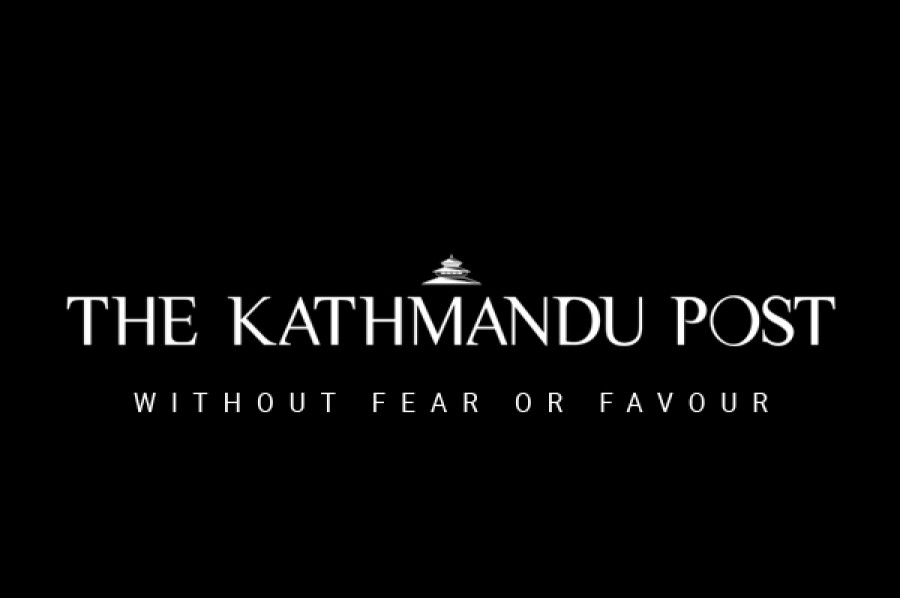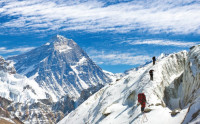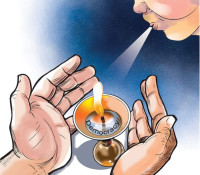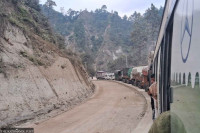Fri, Jan 9, 2026
Opinion
No go zone
The bid to get controlled areas opened for tourism is facing obstacles, mainly due to ‘Tibet-related sensitivities’
bookmark
Navin Singh Khadka
Published at : January 3, 2014
Updated at : January 3, 2014 08:41
A
new set of recommendations submitted to the government recently could mean that some changes are afoot in trekking and mountaineering activities in Nepal. The 160-plus page document includes recommended reforms like opening up of several border peaks and royalty-related issues. But there was one particular thing tourism operators had pinned their hopes on and in all probability, they will now be disappointed.This concerns the relaxing of rules in controlled areas like Upper Mustang and Upper Dolpo, where only limited tourism activities are allowed for premium fees. Tourism entrepreneurs wanted these places to be recommended for complete opening up, like any other tourist spot.
Political action
But according to top sources involved in preparing the recommendations, the document has recommended that the decision be taken at the political level: “Given the risks of undesirable activities in these areas, we decided to leave it for the political level to decide whether these places should be opened as common tourism destinations.” Senior bureaucrats hinted that “Tibet-related activities” were still a matter of concern and therefore, such a decision could not be taken at their level.
Those in the trekking industry say they have lobbied all these years with politicians and yet, nothing happened. They argue that there is no point at keeping these places as controlled areas because the Chinese government has fully opened up Tibetan areas across the border for tourism activities.
“While we have senselessly kept these areas as controlled areas, Chinese tour
operators bring in their clients on vehicles to Lo Manthang (in Upper Mustang) from Tibet and make money,” Mahendra Thapa, former president of the Trekking Agents’ Association of Nepal (TAAN), said in an interview I did for the BBC recently. “We therefore have requested our Home Ministry to open up these areas because China itself has done the same on its side in Tibet.”
There are more than half a dozen such restricted areas in Nepal, most of them bordering Tibet. But what do trekking agents actually mean by opening up of such places? Thapa had this to say: “For example, in Upper Mustang, we are required to pay $500 per day for every tourist we take there, whereas across the border in Tibet, tourists can get the luxury of a five star hotel for 10 days by paying $1,000. The bottom line is that our destination has remained expensive and others are reaping benefits from it. We have put this with the tourism ministry but the Home Ministry has not given permission.” Thapa said the Home Ministry had told him that the file had been sent to the Foreign Ministry. “The home ministry said the foreign ministry was first trying to get an OK from China and other quarters that are involved.”
But TAAN’s incumbent president, Ramesh Dhamala, dismissed any Chinese role. “I have been following this for years now and I can say that there is no pressure from the Chinese government on this issue.” When contacted, Home Minister Madhav Ghimire initially told this scribe that he needed some time to understand the issue. He could not be reached again.
Chinese concerns
The fact that the government is all set to open up new border peaks for mountaineering following the latest recommendation seems to hint that Chinese sensitivities with regards to Tibet might not be an issue. There have been few incidents in the past when mountaineering expeditions from Nepal were sent back by China’s security personnel because the mountaineers had to cross a small patch of Chinese-controlled Tibetan territory to reach the summit, which was within Nepal’s borders.
But then, Chinese scholars I interviewed in the past said that Beijing is aware of “unwanted activities in monasteries that are located in Nepali land bordering Tibet.”
Call it a coincidence, sources within the government too say the risk of “undesirable activities” in areas bordering Tibet is quite high for the bureaucracy to decide whether controlled areas should be opened up for tourism. Hence, “the idea of leaving it for the political level to decide”—if they ever do.
TAAN president Dhamala, however, said that bureaucrats were convinced that rules for such places had to be relaxed. “We have now found that there is a realisation at the bureaucratic level that these places have to be opened up. What we need to do now is take it to the political level and get it decided by the Cabinet.”
That, trekking agents say, has been an uphill task all these years. They may have helped trekkers climb many peaks in Nepal but getting politicians to overcome geopolitics still remains an uphill struggle.
Khadka is a BBC journalist based in London
Most Read from Opinion
Editor's Picks
E-PAPER | January 09, 2026
×




 13.05°C Kathmandu
13.05°C Kathmandu












